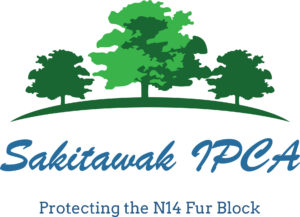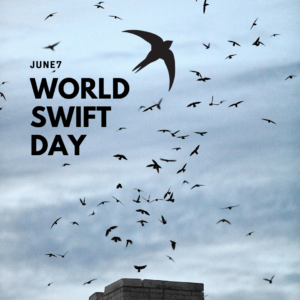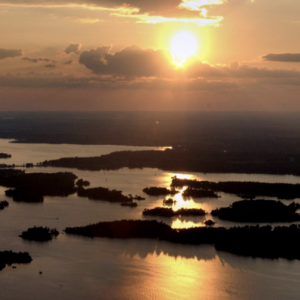Sakitawak IPCA in Northern Saskatchewan Represents the Future of Conservation Says Nature Canada

Unceded Algonquin Territory, Ottawa, ON – October 8, 2021
Nature Canada has partnered with the Sakitawak IPCA to promote Indigenous-led conservation of the N-14 Fur Block in Northwestern Saskatchewan. The conservation area is located about five hours north of Saskatoon in the heart of the Boreal Forest and contains critical habitat for threatened Woodland Caribou, freshwater fisheries, and old-growth pine forests.
Île-à-la-Crosse is the second oldest community in Western Canada established in 1776 with both the Northwest Company and the Hudson’s Bay Company fighting for location settlement as the Fur Trade took off dependent on the beaver. In 1954, Île-à-la-Crosse was designated as a National Historic site.
“We’re extremely proud to be launching an awareness campaign led by the team working on the Sakitawak IPCA project in Île-à-la-Crosse, Saskatchewan,” says Graham Saul, Executive Director of Nature Canada. “The Indigenous Peoples of Sakitawak have stewarded this corner of the Boreal Forest for generations. This opportunity to work with and learn from the Métis of Sakitawak is coming at a critical time when protecting the Boreal is key to combating the twin crises of species loss and climate change.”
The Sakitawak IPCA is one of only four Métis-led conservation projects funded by the Government of Canada to create Indigenous-led protected areas. If protected, it will be the third-largest IPCA in Canada, covering 22,000 square kilometers or 523,000 hectares.
According to Ducks Unlimited Canada the estimated total soil organic carbon stored by the N-14 Fur Block, wetland and upland areas combined, is approximately 225 million tonnes, which is equivalent to 823 million tonnes of atmospheric CO2. This is equivalent to the total annual CO2 emissions from an estimated 179 million cars, or 20 years of emissions from 8.9 million automobiles. These wetlands and bogs are vital for Woodland Caribou as they are home to unique plants that Caribou thrive from.
The community of Île-à-la-Crosse hopes to protect the N-14 Fur block to safeguard the area for future use by generations to come, and for the survival of the many species who call it home. Sakitawak is Cree for “where the rivers meet” and this area is globally important as a part of the Boreal Forest where many species at risk, like Woodland caribou, live and cling to survival.
“The Sakitawak IPCA is honoured that Nature Canada has responded to our request to partner as we work towards protecting the N14 Fur Block. These partnerships are key to the long-term success of our work. We cannot do this alone. The stature and history of Nature Canada will allow us to communicate our goals to a larger audience in Canada whose interests in conservation are common and global in intent,” says Duane Favel, Mayor of Île-à-la-Crosse, and Sakitawak IPCA board member.
Nature Canada has partnered with Sakitawak IPCA and the community of Île-à-la-Crosse to share our stories with our nature conservation community of over 1,000 organizations and millions of Canadians across the country. The hope is to raise awareness of this important work regionally in Saskatchewan and nationally with a goal of helping Sakitawak IPCA secure the financial support needed to move forward. This partnership stems from Nature Canada’s organizational commitment to decolonize its approach to conservation, and center Indigenous-led projects as they are the future of conservation in Canada.
Indigenous Peoples are the original stewards of nature, living in harmony and using the land to provide food security for their communities through hunting, fishing, and berry harvesting. Indigenous peoples are the first conservationists in a spirit of reciprocity with the lands. Today, in the face of extreme degradation, loss of nature and accelerating climate change, it’s time to return leadership on protecting nature back to Indigenous communities as the most effective stewards and protectors of lands and waters.
Respecting Indigenous rights and supporting Indigenous-led conservation are key to achieving the goal of protecting 30 percent of lands and waters by 2030, which is a target Canada has committed to on the international stage. Protecting at least this much land and water is critical to halting nature loss and avoiding the worst impacts of species decline.
-30-
Resources:
Nature Canada / Sakitawak Joint Campaign
Sakitawak IPCA
For more information contact:
Scott Mullenix, Director of Communications
Nature Canada
613-562-3447 ext. 230
media@naturecanada.ca
Peter Durocher, Manager
Sakitawak IPCA
sakitawakconservation@gmail.com
(639) 832-7117



